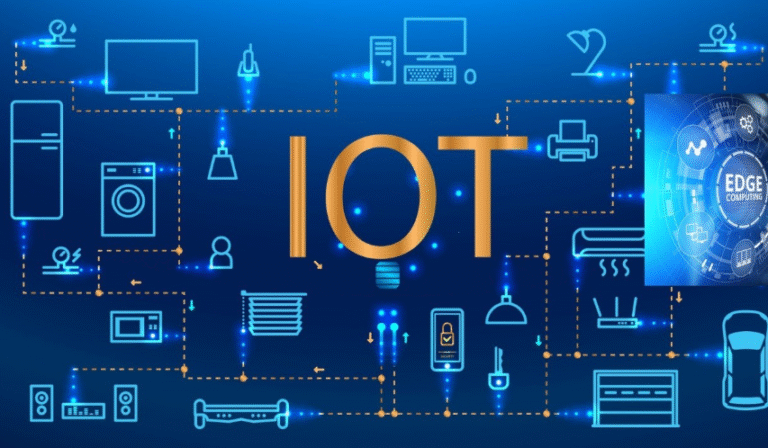The Future of Work: How Automation and Robotics Are Reshaping Jobs
Introduction to the Future of Work
The landscape of work is undergoing a profound transformation. As automation and robotics rapidly evolve, they are reshaping how we perform tasks, manage operations, and even envision careers. This wave of technological innovation, often dubbed the Fourth Industrial Revolution, promises increased efficiency and productivity but also raises important questions about job security, skills, and the future role of humans in the workplace.
Understanding the future of work involves grasping the dual nature of automation and robotics—not just as tools for replacing repetitive tasks but as enablers of new opportunities and growth. This article explores how these technologies are reshaping jobs across industries, the challenges they present, and how individuals and organizations can prepare for the changes ahead.
Historical Context of Automation in Work
Automation is not new. Its roots trace back centuries with the invention of simple machines and the first industrial revolution, which mechanized textiles and manufacturing. The second and third industrial revolutions brought electrification and digital computing, respectively, each time transforming workplaces dramatically.
Today, the integration of advanced robotics and artificial intelligence marks a new era where machines not only perform manual labor but also cognitive functions. This progression reflects humanity’s ongoing quest to improve productivity and quality of life, albeit with a fresh set of challenges that society must navigate.
See also: Exploring the Latest Advances in Wearable Technology for Health Monitoring
Understanding Automation and Robotics
Automation refers to the use of technology to perform tasks with minimal human intervention. Robotics, a subset of automation, involves programmable machines capable of carrying out complex activities autonomously or semi-autonomously.
Automation technologies include everything from simple mechanical devices to advanced software algorithms powered by artificial intelligence (AI) and machine learning. Robotics can range from industrial robots in factories to service robots assisting in healthcare or retail.
By combining these, industries achieve unprecedented precision, speed, and safety in operations, setting new standards for what machines can accomplish.
Current Trends in Automation and Robotics
Today’s workplace incorporates several cutting-edge trends in automation and robotics:
- AI and Machine Learning: These enable systems to learn from data, improve over time, and make decisions, transforming customer service, data analysis, and even creative tasks.
- Collaborative Robots (Cobots): Designed to work alongside humans safely, cobots enhance human capabilities rather than replace them outright.
- Industry 4.0: The integration of IoT (Internet of Things), automation, and data exchange in manufacturing processes leads to smarter factories and supply chains.
These trends are already making workplaces more agile and adaptive, often reducing errors and operational costs.
Impact on Different Job Sectors
Automation and robotics affect industries differently:
- Manufacturing: Robots handle repetitive, dangerous tasks, improving safety and output.
- Healthcare: Robotics assist surgeries and automate diagnostics, enhancing precision.
- Retail and Customer Service: Automated checkouts and chatbots streamline operations.
- Transportation and Logistics: Autonomous vehicles and drones are revolutionizing delivery systems.
Each sector experiences a unique blend of disruption and opportunity, with some roles becoming obsolete while others emerge.
Positive Effects of Automation on Jobs
Despite fears, automation also brings significant benefits:
- Increased Efficiency: Machines handle routine tasks faster and with fewer errors.
- Job Creation: New roles arise in programming, maintenance, and AI supervision.
- Enhanced Safety: Robots take on hazardous jobs, reducing workplace injuries.
Automation enables workers to focus on higher-level, creative, and interpersonal aspects of their jobs, fostering innovation.
Challenges and Risks of Automation
However, automation poses challenges:
- Job Displacement: Certain roles, especially repetitive or manual, risk being replaced.
- Skills Gap: Workers must acquire new technical skills to remain relevant.
- Ethical Concerns: Issues around privacy, surveillance, and decision-making by machines demand careful oversight.
Addressing these challenges requires proactive policies and a commitment to worker support.
The Role of Human Skills in an Automated World
Human skills such as creativity, emotional intelligence, and critical thinking remain irreplaceable. As automation handles routine tasks, these uniquely human capabilities become even more valuable. Lifelong learning and adaptability will be essential traits for thriving in this evolving work environment.
Preparing for the Future: Education and Training
To bridge the skills gap, education systems and employers must emphasize reskilling and upskilling. Governments and private sectors should collaborate on training programs focused on digital literacy, problem-solving, and flexible thinking to prepare the workforce for future demands.
Case Studies of Automation Success
Several companies have successfully integrated robotics, yielding productivity boosts without massive layoffs. For instance, automotive manufacturers using cobots report faster production times and improved worker satisfaction, while logistics firms deploying autonomous vehicles streamline deliveries and reduce costs.
The Economic Implications of Automation
On a macroeconomic level, automation can drive growth by lowering production costs and fostering innovation. However, shifts in labor demand may widen economic inequality if not managed well, underscoring the need for policies that support displaced workers.
Legal and Regulatory Considerations
Policymakers face the challenge of crafting regulations that encourage innovation while protecting workers’ rights. Labor laws, safety standards, and ethical guidelines must evolve to address the realities of automation and robotics in the workplace.
Future Predictions: What’s Next?
Looking ahead, emerging technologies like quantum computing and advanced AI promise even greater shifts. Hybrid workplaces where humans and robots collaborate seamlessly are likely to become the norm, requiring new management approaches and cultural adaptation.
FAQs about Automation and the Future of Work
Q1: What jobs are most at risk of automation?
Jobs involving repetitive, manual tasks such as assembly line work, data entry, and basic customer service are most vulnerable.
Q2: Can robots replace humans completely?
While robots excel at routine tasks, they cannot fully replicate human creativity, empathy, and complex decision-making.
Q3: How can workers stay relevant?
By continuously learning new skills, especially digital and interpersonal skills, and embracing lifelong education.
Q4: Will automation create new jobs?
Yes, especially in tech, robot maintenance, AI supervision, and other emerging fields.
Q5: How does automation affect wages?
It can increase productivity and wages for skilled workers but may suppress wages in low-skill roles without intervention.
Q6: What role do governments play in automation?
Governments can facilitate retraining programs, create fair labor laws, and incentivize innovation responsibly.
Conclusion: Embracing the Future of Work
Automation and robotics are undeniably reshaping jobs across the globe. While challenges like displacement and skill gaps exist, the potential benefits in efficiency, safety, and innovation are immense. By embracing lifelong learning, fostering collaboration between humans and machines, and implementing supportive policies, workers and businesses alike can thrive in this exciting new era of work.
The future of work isn’t about replacing humans with machines—it’s about harnessing technology to amplify human potential and create meaningful, sustainable employment.



